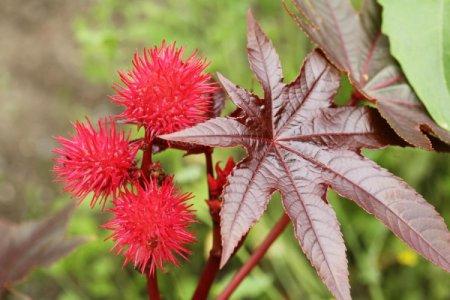
Wireworms are not such a "well-known" enemy of the garden as ants or Colorado beetles. They are quite inconspicuous, difficult to detect and not everyone knows who they are. But the losses from wireworms are more than enough, because when they finally catch the eye, the chances of saving the plant are almost zero. We have collected all the best folk remedies to get rid of the wireworm in the garden!
Wireworms in the garden: why are they dangerous?
First, let's figure out who the wireworms are, because they are still so little studied. In fact, this is not a separate insect, but the larvae of click beetles. Adults eat mainly the leaves of cereals and are not too dangerous. During the season, one female lays several hundred eggs, but from them much more voracious wireworm larvae hatch.
The wireworm is the main threat to vegetable gardens, because it is, without exaggeration, omnivorous. On their way, the larvae sweep away potatoes, beets, tomatoes, cabbage, radishes - and that's not all. They are completely indifferent to whether these are tubers or sprouts, only germinated seeds or adult plants. During the season, in the most neglected case, wireworms can destroy up to 75% of the crop.
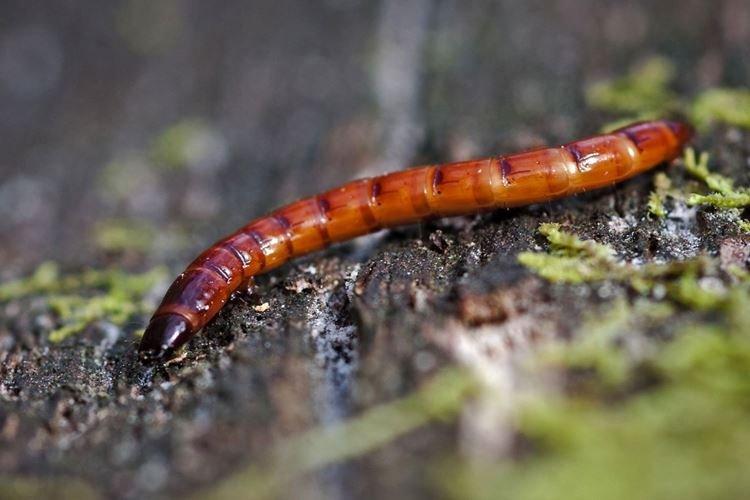
How to spot a wireworm
Spotting the wireworm is very problematic, because the larvae hide in the ground and reluctantly crawl to the surface. Usually, you can find out that the tubers have been mercilessly eaten only at the harvesting stage. In the best case - during hilling or loosening of the soil.
Sometimes, the appearance of gluttonous parasites can be suspected by the presence of adults. But not everything is so smooth with them, because outwardly they are very similar to harmless ground beetles. So you have to listen to see if the beetles make characteristic clicks during their activity.
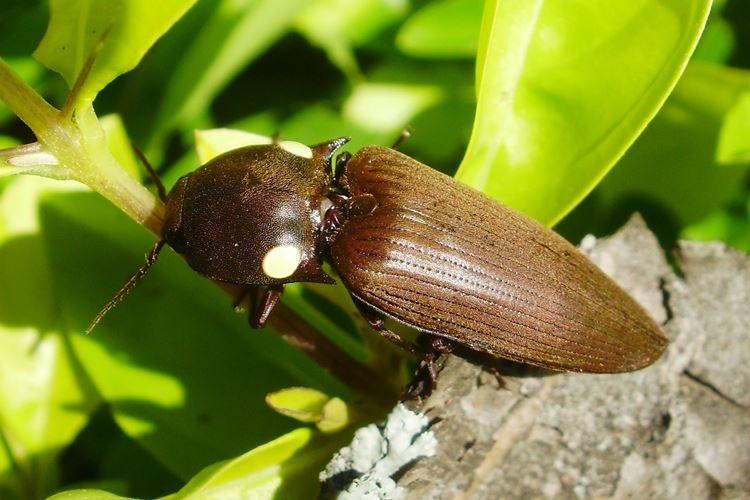
If at least once you come across potatoes, dotted with winding passages, this is the work of a wireworm. In the early stages, dark spots and black dots indicate it.
It only saves that the larvae move very slowly from bush to bush, because they cope better with vertical moves. This gives a slight head start and the ability to lose a couple of plants, and not the whole garden.
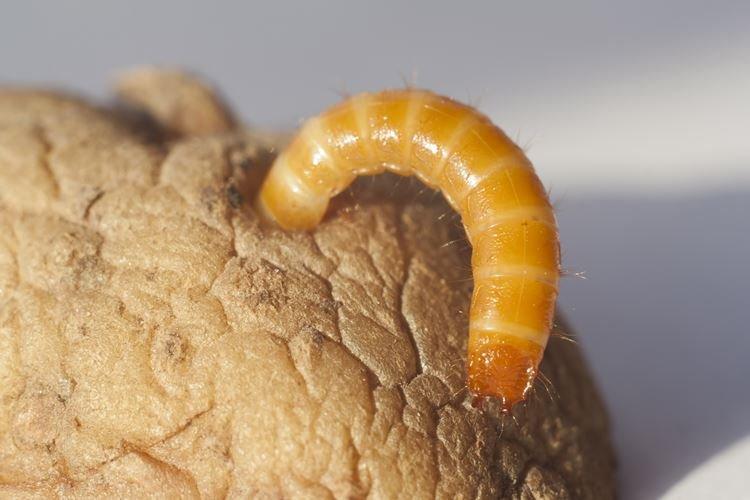
Mechanical wireworm traps
Banal mechanical traps work well against voracious larvae. We offer several proven options:
- Bury jars of chopped potatoes and carrots near the wireworm-affected garden bed. Cover the neck with foil and cut through small holes so that beetles and larvae can get inside, but cannot get out;
- String the remnants of the old crop on the wire and dig into the ground, leaving the end outside. After three days, pull the vegetables by the wire and destroy them along with the larvae;
- Adult beetles can be lured with a heap of manure or freshly cut grass;
- In a glass jar, generously pour sawdust soaked in insect poison. Dig the jars into the ground up to the neck in different places between the beds;
- Soak old and spoiled potato tubers in an insecticide for a day and scatter them around the garden, adding a little. After a few days, replace the trap with a new one until the wireworms disappear from the garden.
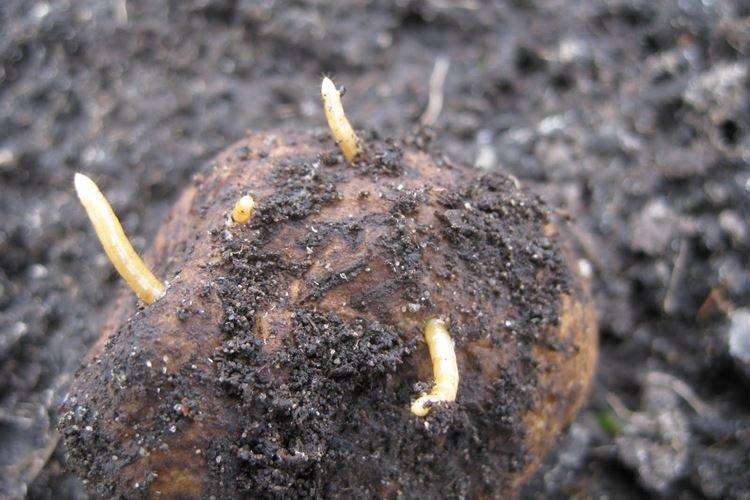
Simple folk remedies for wireworm
Folk recipes do a good job if you manage to find the wireworm on time. They are the most environmentally friendly and safe for any seedlings, so it's worth starting with them.
- When planting tubers, pour a little mustard powder with hot chilli into each hole;
- Bring chopped onion husks into the holes - it repels many pests. And then periodically steam it with water, cool it and use it for watering;
- Pour half a kilo of fresh nettles and 200 g of dandelions in a bucket of water. Let the liquid brew and spill the potato beds every three days for a week and a half;
- Put a few spruce or pine branches into the holes so that the soil is saturated with the essential oils of the needles;
- If the plants are already affected, fields them with celandine infusion. Brew 100 g of chopped flowers and let it brew for three days;
- Scatter the crushed eggshells over the beds where the pests have settled.
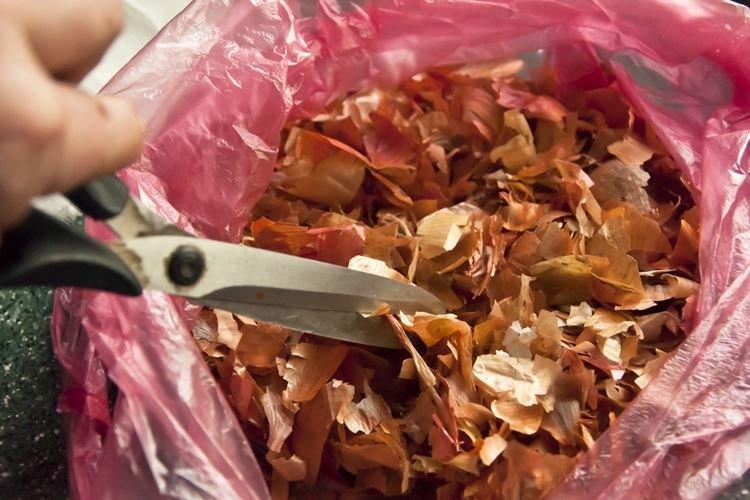
Chemicals
These are more aggressive methods of dealing with wireworms in the garden, but sometimes you cannot do without them. Be sure to use protective equipment: gloves, goggles, respirators.
- When planting tuberous crops, treat each onion with about 250 ml of manganese solution, 2-4 g per bucket of water;
- Some mineral fertilizers "displace" wireworms a couple of meters deep into the ground. There they no longer reach the cultures. You will need about 30 g of ammonium nitrate or ammonium sulfate per square;
- Superphosphates treated with insecticides have proven themselves well. This is a more gentle method than using poisons directly. First spray the fertilizers and let them dry on the film, and then add them to the soil, about 5 kg per 100 squares;
- As a last resort, use ready-made store-bought insecticides against wireworms in their pure form. Be sure to strictly observe the proportions and dosages from the label, because most of these substances are real poisons.

Other methods of dealing with wireworms
In the case of the wireworm, the "in war all means is good" method works one hundred percent. Therefore, we learned a couple more effective tricks necessary in the difficult struggle for the garden.
- Bring birds to the site - crows, wagtails, rooks, starlings, blackbirds and titmice - they willingly eat clickers and their larvae. Leave feeders and treats for the birds;
- Reduce the acidity of the soil with eggshells, bone meal or ash;
- Plant between the beds plants that scare away wireworms. These are mustard, spinach, lupine, buckwheat, rapeseed, sweet clover, dahlias and any legumes;
- If clickers have settled in the garden, plant resistant crops there next year: pumpkin, greens, cereals or beans;
- Carry out the seasonal digging of the soil especially carefully and deeply, because in the warm season, the larvae are selected closer to the surface. And be sure to carry out a deep digging under the frost in order to destroy the wireworm, which has already lain down for the winter;
- Before planting potatoes, sow the garden with cereal or corn seeds. During this time, the wireworm will get out on a new food - and you will destroy the larvae along with the first landing.

Prevention of wireworm in the garden
Getting rid of insatiable larvae is very difficult, and usually you have to combine all the possible methods at once. Therefore, it is better to do everything initially to avoid the appearance of the wireworm.
- Always weed, get rid of burdocks and "garbage" plants. They become a comfortable and cozy habitat not only for click beetles, but also for other pests;
- Control the acidity of the soil and add alkaline additives in a timely manner. If more and more ferns, horsetails, sorrel or plantains appear among the weeds, this is a sure signal that it is time to change something;
- During harvesting, harvest it completely - and only then you will deal with the presentation and quality of the fruit. Don't leave bad potatoes or carrots to rot in your garden. You think that you are leaving fertilizer for the soil, but in reality you are storing winter supplies for parasites;
- Swap seedlings every season. This is called crop rotation - the alternation of crops in one field and the most important stage in any farming. This improves the properties and nutritional value of the soil, prevents erosion, the spread of weeds and diseases.




